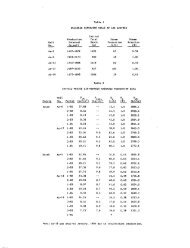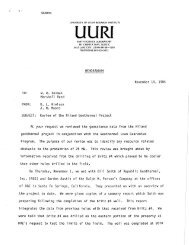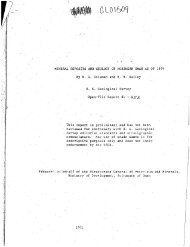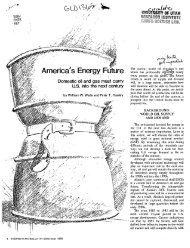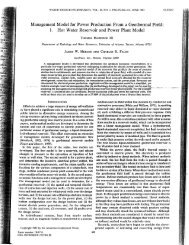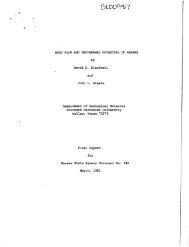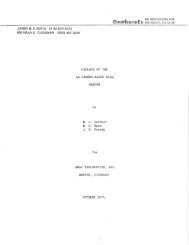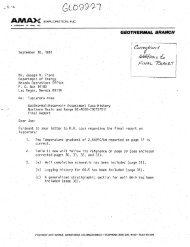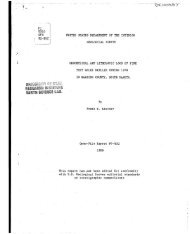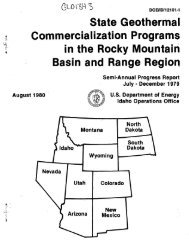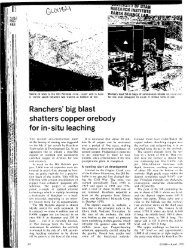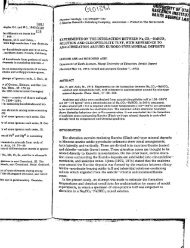"INDUCED POLARIZATION DATA AT ... - University of Utah
"INDUCED POLARIZATION DATA AT ... - University of Utah
"INDUCED POLARIZATION DATA AT ... - University of Utah
You also want an ePaper? Increase the reach of your titles
YUMPU automatically turns print PDFs into web optimized ePapers that Google loves.
CHU<br />
that the principles illustrated in Figure 3, discovered through the<br />
study <strong>of</strong> synthetic ore samples, hold for any polarizable particle, then<br />
we can add these inferences:<br />
(vi) pyrite affects the phase spectrum well above 1 Hz; the peaks<br />
<strong>of</strong> the phase dispersions associated with pyrite and clay are<br />
above 10 3 Hz,<br />
(vii) the maximum value <strong>of</strong> the phase dispersions associated with<br />
pyrite is at lower frequency than that <strong>of</strong> clay; this is due<br />
mainly to the difference in grain size between the mineral<br />
groups,<br />
(viii) the dispersions <strong>of</strong> clay and pyrite superimpose to explain<br />
the IP effect, and<br />
(ix) the manner in which the dispersions <strong>of</strong> clay and pyrite<br />
contribute to the final phase spectrum <strong>of</strong> the core sample<br />
depends upon the relative positions <strong>of</strong> these two dispersion<br />
curves along the frequency axis, as well as the shape and<br />
magnitude <strong>of</strong> each <strong>of</strong> the dispersion curves; all <strong>of</strong> these<br />
factors are a function <strong>of</strong> several parameters, including the<br />
resistivity <strong>of</strong> the rock, the amount <strong>of</strong> polarizable material<br />
present, and the grain sizes <strong>of</strong> the particles causing the IP<br />
effect.<br />
On the basis <strong>of</strong> these hypotheses, we suggest that our uncoupled<br />
field data are low frequency asymptotes <strong>of</strong> many superposed spectral<br />
dispersions whose main peaks are well above the range <strong>of</strong> frequencies<br />
used in the field.<br />
In conclusion, we note that there is good agreement between the<br />
phase extrapolated field data and the laboratory results. The IP



